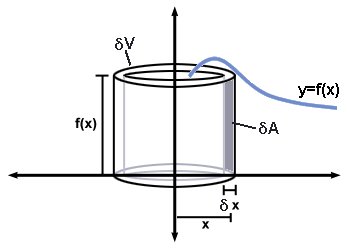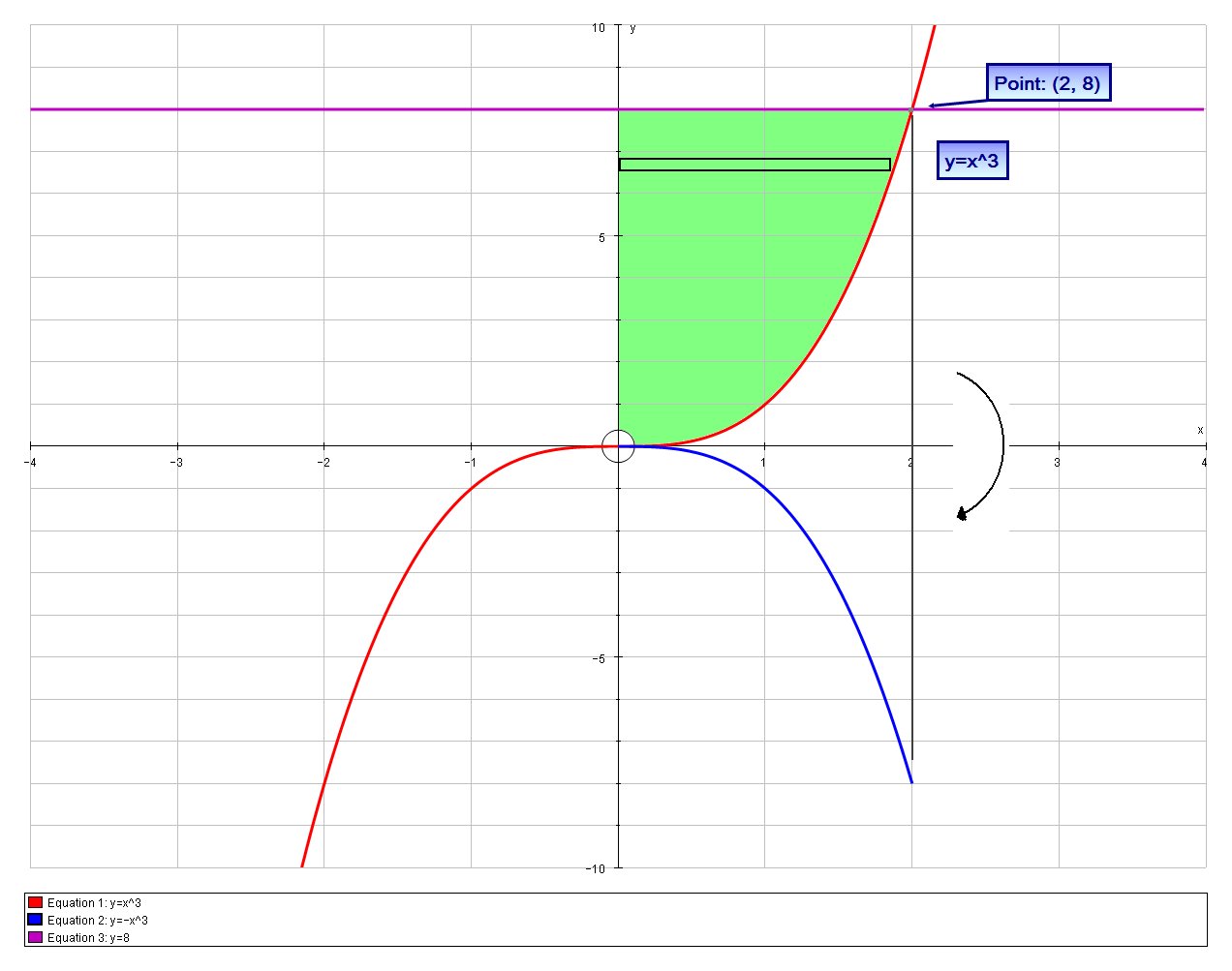How do you use the method of cylindrical shells to find the volume of the solid obtained by rotating the region bounded by #y =x^3#, y= 8 , x= 0 revolved about the x-axis?
1 Answer
Volume
Explanation:
If you imagine an almost infinitesimally thin vertical line of thickness
#delta A ~~"width" xx "height" = ydeltax = f(x)deltax#

If we then rotated this infinitesimally thin vertical line about
#delta V~~ 2pi xx "radius" xx "thickness" = 2pixdeltaA=2pixf(x)deltax#
If we add up all these infinitesimally thin cylinders then we would get the precise total volume
# V=int_(x=a)^(x=b)2pi \ x \ f(x) \ dx #
Similarly if we rotate about
# V=int_(y=a)^(y=b)2pi \ y \ g(y) \ dy #
So for this problem we have:

We need the point of intersection for the bounds of integration;
# x \ = 0 => y=0 #
# x^3 = 8=>x=2 #
And we are integrating wrt
# y=x^3 => x=y^(1/3) #
Then the required volume is given by:
# V=int_(y=a)^(y=b)2pi \ y \ g(y) \ dy #
# \ \ \= 2pi int_0^8 \ y*y^(1/3) \ dy #
# \ \ \= 2pi int_0^8 \ y^(4/3) \ dy #
# \ \ \= 2pi [y^(7/3)/(7/3)]_0^8 #
# \ \ \= (6pi)/7 [y^(7/3)]_0^8 #
# \ \ \= (6pi)/7 (8^(7/3)-0) #
# \ \ \= (6pi)/7 * 128 #
# \ \ \= (768pi)/7 \ \ \ unit^3#
Washer Method
We call also use the "washer" method which gives the volume of revolution about
# V=pi \ int_(x=a)^(x=b) \ (f(x))^2 \ dx #
Which in this problem gives:
# V="(volume bounded by " y=8) - ("volume bounded by " y=x^3)#
Volume bounded by
# V=pi \ int_0^2 \ (x^3)^2 \ dx #
# \ \ \ =pi \ int_0^2 \ x^6 \ dx #
# \ \ \ =pi \ [x^7/7]_0^2 #
# \ \ \ =pi \ (128/7 - 0) #
# \ \ \ =(128pi)/7 #
The required volume of revolution is then the volume of a cylinder (
# V=(pi)(64)(2) - (128pi)/7 #
# \ \ \ =128pi - (128pi)/7 #
# \ \ \ =(768pi)/7 # , as before
Or if you prefer, we can perform the calculation in a single integral, as:
# V="(volume bounded by " y=8) - ("volume bounded by " y=x^3)#
# \ \ \ =pi \ int_0^2 \ (8)^2 \ dx - pi \ int_0^2 \ (x^3)^2 \ dx #
# \ \ \ =pi \ int_0^2 \ (8)^2 - (x^3)^2 \ dx #
# \ \ \ =pi \ int_0^2 \ 64-x^6 dx #
# \ \ \ =pi \ [64x-x^7/7]_0^2 #
# \ \ \ =pi \ (128-128/7 - 0) #
# \ \ \ =(768pi)/7 # , as before

